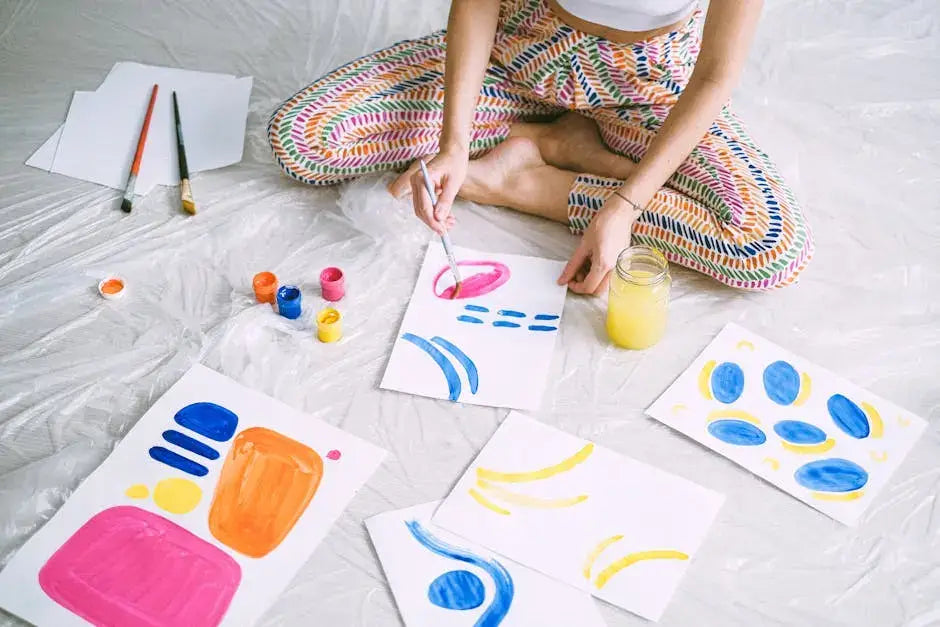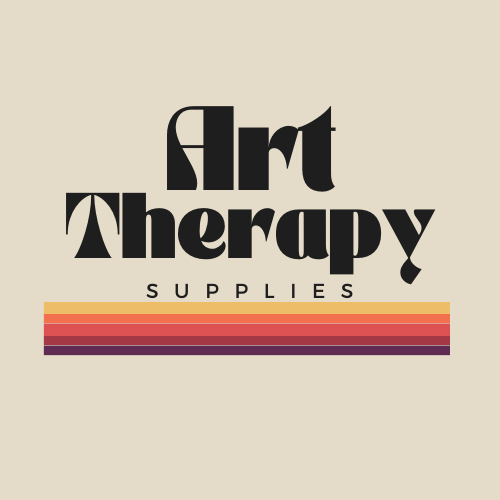Art therapy goes beyond the surface of aesthetics; it utilizes colors as powerful instruments capable of influencing our emotions and enhancing creativity. In this blog, we will delve into how various colors affect mood and enrich artistic expression. Join us as we uncover the nuances of colors in art therapy, exploring their potential to transform our creative pursuits.

Understanding the Psychology of Color
Colors evoke psychological responses that can trigger a wide array of emotions. In the context of art therapy, comprehending these effects is vital for selecting colors that resonate with the individual. For example, red often ignites feelings of excitement and urgency, while blue tends to promote tranquility and relaxation. With this knowledge, art therapists can create tailored experiences that optimize the therapeutic process, ensuring a more profound impact on emotional well-being.
Furthermore, our unique personal associations with colors deeply influence our responses. A bright yellow might herald memories of joyful summer days, whereas muted gray could bring about feelings of sadness. Recognizing these personal nuances enriches our understanding of art therapy’s role in emotional healing, allowing for a more customized approach to each individual's needs.
Warm vs. Cool Colors
The distinction between warm and cool colors plays a significant role in art therapy. Warm shades like red and orange are known for their energizing qualities, stimulating activity and engagement, while cool hues such as blue and green provide calming effects that soothe the mind and body. This knowledge allows art therapists to select color palettes that align with desired emotional outcomes, creating an environment conducive to healing.
Using uplifting warm colors, like bright yellows or soft corals, can significantly bolster mood, making them particularly effective in sessions focused on overcoming anxiety or lethargy. In contrast, cooler tones are ideal for cultivating relaxation and mindfulness, perfect for stress relief activities. By thoughtfully combining warm and cool hues, therapists can establish a dynamic emotional landscape that facilitates exploration and expression.
Encouraging clients to select colors that resonate with their current emotional states fosters deeper self-awareness within the therapeutic experience. The act of choosing colors not only enhances emotional expression but also promotes a richer comprehension of one's feelings and thoughts.
Color Associations and Their Effects
Each color carries its own set of associations and meanings. Yellow, for instance, is commonly connected to joy and positivity, while purple is often seen as a symbol of creativity. Grasping these associations is instrumental for effectively employing colors in art therapy sessions.
Green, frequently associated with growth and renewal, can be an excellent choice for art projects aimed at self-development and transformation. Engaging with shades of green may evoke feelings of optimism and motivation. Similarly, colors like blue and indigo can anchor emotions, providing stability in times of distress or uncertainty. Understanding these color associations allows therapists to guide clients toward specific colors that directly address their emotional goals.
It is essential to recognize that individual experiences with colors can differ, which is why fostering open discussions about color preferences and associations is vital. This ensures that clients feel validated and understood within the therapeutic space, ultimately enhancing their emotional journey through art.
Using Color to Enhance Creativity
Integrating specific colors into artwork can invigorate creativity and inspire fresh ideas. Art therapy encourages individuals to experiment with various colors, stimulating their creative potential and encouraging the exploration of new techniques.
Vibrant, bold colors can infuse energy into the creative process, helping people break through artistic blocks that may limit their expression. Engaging with color can transform routine tasks into joyful avenues of discovery, reigniting a passion for creativity. In contrast, softer shades and muted tones may promote introspection and provide opportunities for deeper thought, leading individuals through their emotional landscapes toward newfound creative insights.
Therapists often prompt clients to reflect on their feelings associated with different colors throughout the creative process. This heightened self-awareness can lead to more profound understandings of personal artistic choices, ultimately resulting in enriched creative outcomes.
Practical Tips for Applying Colors in Art Therapy
Consider experimenting with various techniques such as color mixing, layering, or even crafting mood boards. Such activities can enhance understanding of how colors influence both mood and the creative process.
A particularly engaging exercise could involve creating a color wheel that associates emotional meanings with each color. This visualization aids individuals in grasping the complexity of their emotional relationships with colors.
Additionally, practicing mindfulness during color selection can yield profound benefits. By attuning oneself to how each color resonates personally, individuals can deepen their connection to the creative process and gain valuable insights during art sessions.
Harnessing the Power of Color in Art Therapy
Recognizing the effects of colors on mood and creativity empowers individuals to leverage these influences within their artistic practices. Whether you are an artist, therapist, or someone looking to enhance your creative process, understanding the emotional qualities of colors can provide valuable insights and foster positive experiences in art therapy.

